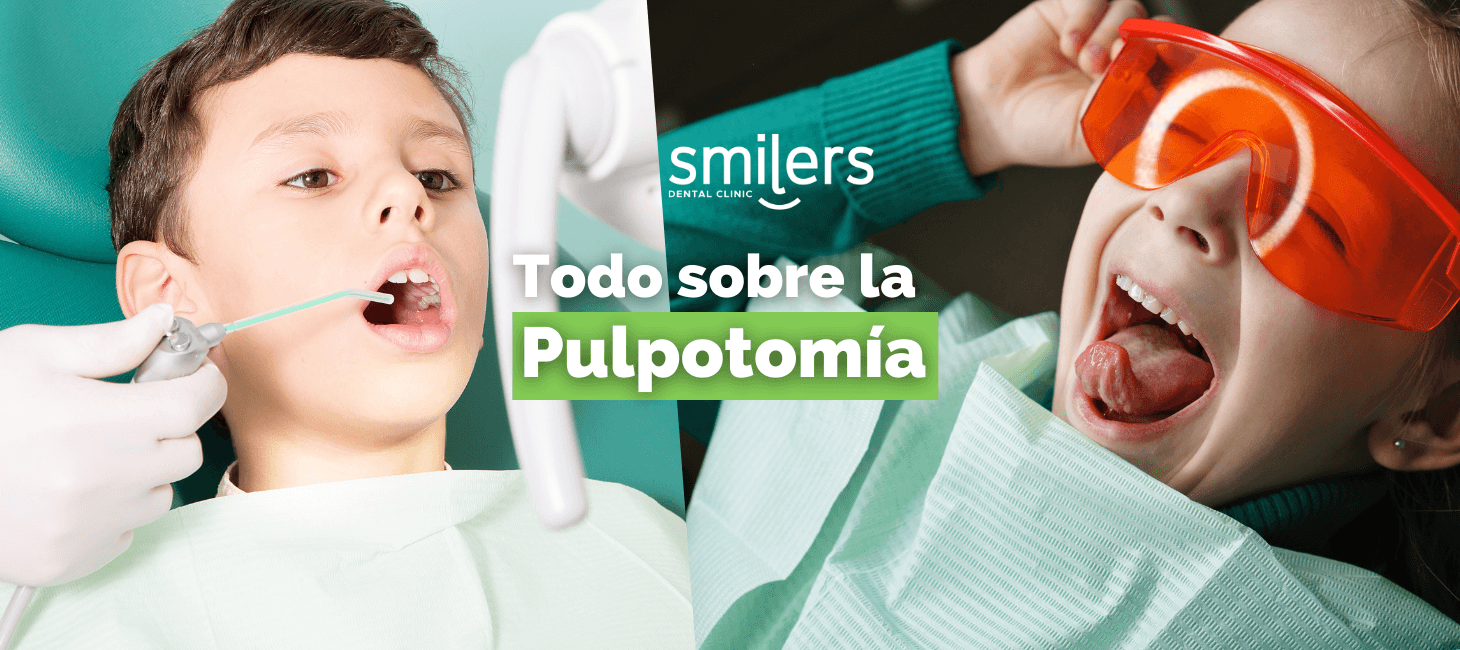Pulpotomy is a common treatment in children and the main peculiarity of this process is that it is only carried out on primary teeth. We know pulpotomy as the process that aims to eliminate the pulp that has been damaged after caries, so that removing the decayed part of the tooth is another of the processes involved in this common intervention.
Finally, the last step of the pulpotomy will be to perform a small reconstruction of the treated tooth, with a veneer being one of the most commonly used alternatives at this stage.
What is pulpotomy?
As we mentioned in the previous paragraph, pulpotomy is a treatment that is only carried out on patients who still have provisional teeth. This is a relatively simple procedure that is performed under local anaesthesia so that the patient does not experience any discomfort during the process.
First, the part of the tooth that is affected by decay will be removed and then the damaged pulp will be treated. The last step in this process will be to fill the gap with a specific medication for this situation.
Is pulpotomy dangerous?
The quick answer is that your child is not at risk. Obviously you need to take him/her to a dental professional, consult your family dentist for this procedure.
One of the consequences of pulpotomy is that the tooth will be more fragile as it has been “emptied” to eliminate the infection, so in many cases it is necessary to carry out a dental reconstruction through composite.
Another alternative is to place a sheath so that the child can have proper oral functionality and chew normally.
What are the objectives of pulpotomy?
There are many and varied reasons why a pulpotomy treatment is recommended. Firstly, it is important to mention that this process aims to put an end to the dental pain suffered by the child due to the infection caused by caries and the poor state of the dental pulp. However, there are other objectives to consider that make this intervention advisable. These are the following:
- Avoid future complications: Thanks to pulpotomy, we can correct all kinds of problems that could affect the eruption of the permanent tooth, which is another reason why pulpotomy is recommended.
- Improve the patient’s dental aesthetics: It is important to understand that dental aesthetics in childhood plays a very important role. Let’s not forget that children can be very cruel and this situation can affect their self-esteem and confidence. Thanks to this simple process we can restore the aesthetics of the tooth.
- Restoration of the damaged tooth: Finally, it should be noted that the main objective of pulpotomy is not only to eliminate the infection caused by caries, but also to take care of the dental restoration phase. Thanks to this, the patient will be able to recover both aesthetics and oral functionality.
Another feature surrounding pulpotomy is that it is carried out by a specialist in paediatric dentistry, so he or she has extensive experience with this group of patients.
Pulpotomy in children
In conclusion, we can determine that pulpotomy is one of the most common procedures carried out in children, although it should be noted that we are talking about patients who require all types of care for oral problems.
Although the teeth of these patients are provisional, we must be aware that improper care of them will affect their future. Nowadays there are a wide variety of prevention techniques and treatments that are focused on this public, which is why it is vitally important to visit our dentist regularly to check the state of the child’s mouth.
This post is purely informational and does not replace a consultation with the dentist in any way. Contact the smile agents team to schedule an appointment with one of the dentists at Smilers Dental Clinic.



